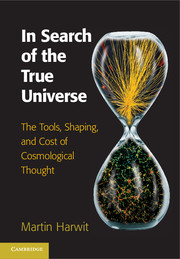Book contents
- Frontmatter
- Contents
- Preface
- Notes on Usage
- 1 The Nineteenth Century's Last Five Years
- Part I The Import of Theoretical Tools
- Part II A National Plan Shaping the Universe We Perceive
- 7 A New Order and the New Universe It Produced
- 8 Where Did the Chemical Elements Arise?
- 9 Landscapes
- 10 The Evolution of Astrophysical Theory after 1960
- 11 Turmoils of Leadership
- 12 Cascades and Shocks that Shape Astrophysics
- 13 Astrophysical Discourse and Persuasion
- Part III The Cost of Discerning the True Universe
- Epilogue
- Appendix: Symbols, Glossary, Units and Their Ranges
- Index
- References
10 - The Evolution of Astrophysical Theory after 1960
Published online by Cambridge University Press: 05 December 2013
- Frontmatter
- Contents
- Preface
- Notes on Usage
- 1 The Nineteenth Century's Last Five Years
- Part I The Import of Theoretical Tools
- Part II A National Plan Shaping the Universe We Perceive
- 7 A New Order and the New Universe It Produced
- 8 Where Did the Chemical Elements Arise?
- 9 Landscapes
- 10 The Evolution of Astrophysical Theory after 1960
- 11 Turmoils of Leadership
- 12 Cascades and Shocks that Shape Astrophysics
- 13 Astrophysical Discourse and Persuasion
- Part III The Cost of Discerning the True Universe
- Epilogue
- Appendix: Symbols, Glossary, Units and Their Ranges
- Index
- References
Summary
Two major innovations occupied theorists in the postwar era: The first began in the 1960s and involved the study of black holes. The second started around 1980 and renewed efforts to understand better the origins of the Universe. Not that these were the only theoretical advances. There was plenty of other work keeping theorists busy. The discovery of X-ray, infrared, and radio galaxies, quasars, pulsars, cosmic masers, and γ-ray bursts, to name just the most striking, begged for quantitative models that could explain these new phenomena. But most of the theoretical models that satisfactorily matched observations involved known conceptual approaches, albeit applied in new settings. In the vocabulary Thomas Kuhn established in the early 1960s, in ‘The Structure of Scientific Revolutions,’ they constituted problem solving. They did not call for new paradigms, entirely new ways of conceiving Nature.
At some level, the theoretical thrusts on black holes and investigations of the earliest moments in cosmic evolution overlapped. Both sought to improve our understanding of space and time through clearer insight into general relativity and – to the extent one might guess at it – quantum gravity. Knowing that highly compact masses might collapse, one had to ask why the early Universe didn't immediately collapse under its gravitational self-attraction to form a giant black hole rather than expand, as now observed.
- Type
- Chapter
- Information
- In Search of the True UniverseThe Tools, Shaping, and Cost of Cosmological Thought, pp. 200 - 229Publisher: Cambridge University PressPrint publication year: 2013



